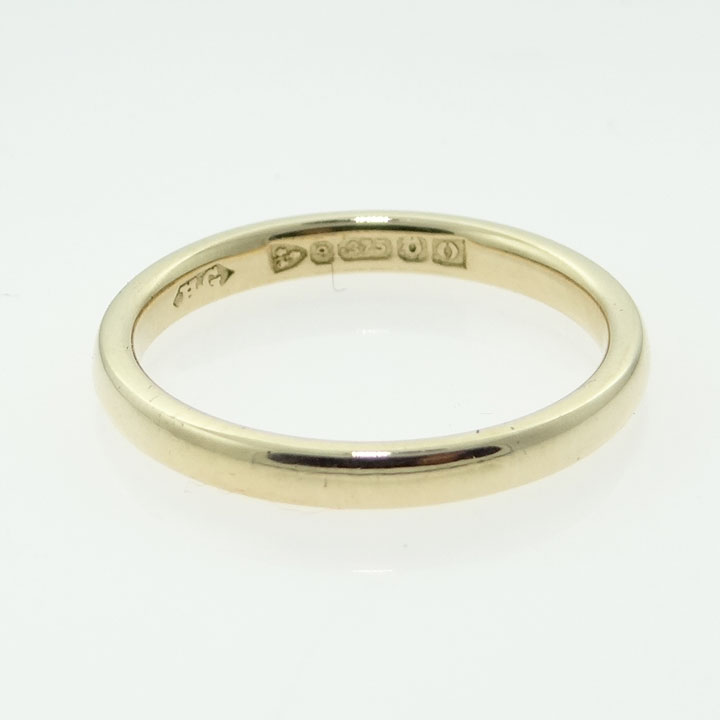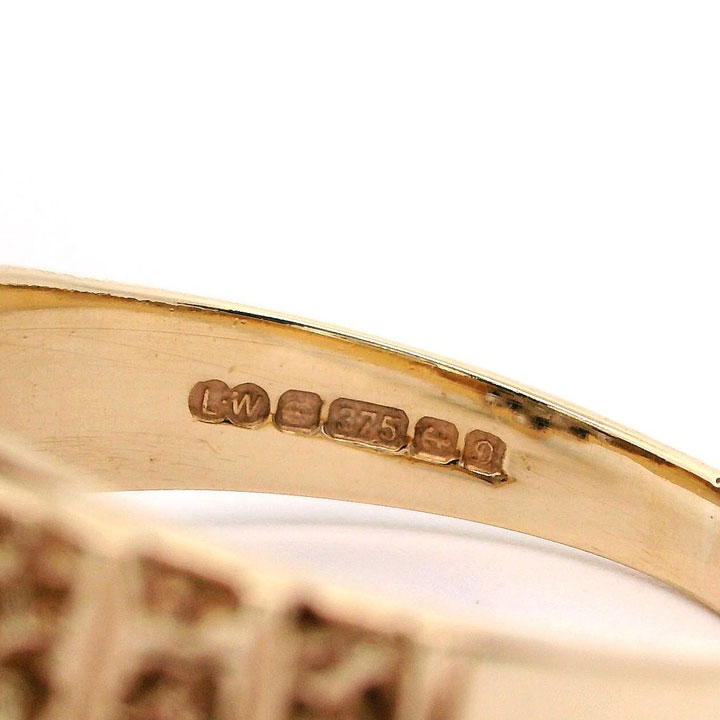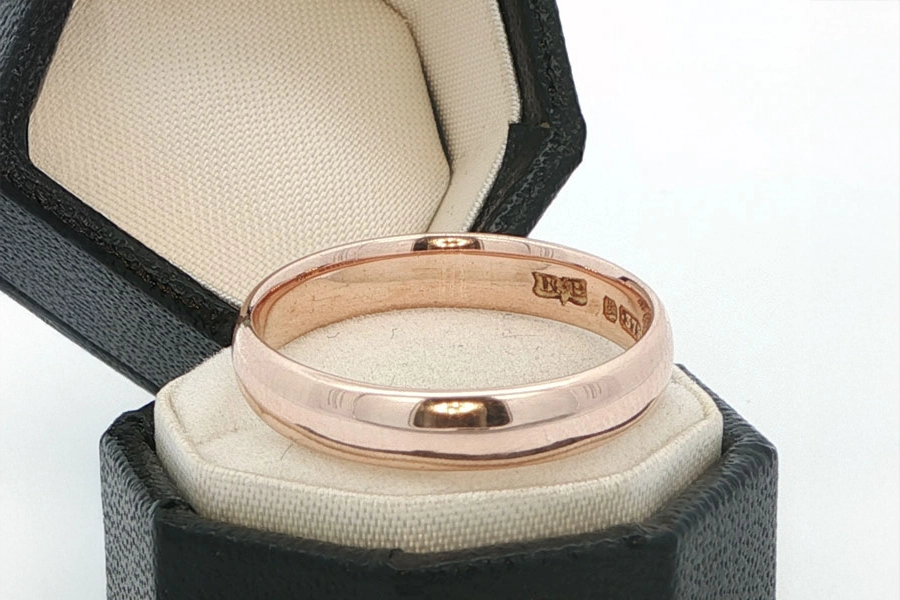Vintage Jewellery
How to Read Vintage Jewellery Hallmarks in the UK
Vintage jewellery hallmarks look small, but they tell a big story. With a few simple clues you can learn the metal fineness, the UK assay office and the year the piece was marked. Our team at The Jewellery Warehouse in Stockport reads vintage hallmarks every day. We are an independent family business with decades in the trade, and this guide shows you how we date and verify vintage pieces so you can feel confident about your own.
What a UK hallmark tells you
A full UK hallmark usually contains four parts. Some items show fewer marks, and older or imported pieces can vary, but these are the main elements to look for:
- Fineness mark – the metal purity shown as a three digit number. Common examples are 375 for 9 carat gold, 585 for 14 carat, 750 for 18 carat, 916 for 22 carat. For silver you will often see 925 for sterling and 958 or 999 for higher purities. Platinum is often 950.
- Assay office symbol – the official mark from the UK office that tested and stamped the piece. London uses a leopard’s head, Birmingham an anchor, Sheffield a rose, and Edinburgh a castle. You may also meet marks from Chester on older jewellery, which closed in 1962.
- Date letter – a single letter that changes every year. The style of the letter and the shield shape around it change with each cycle, so the same letter can point to different years depending on the font and border.
- Maker’s mark – usually one to three initials in a small shaped cartouche. This tells you which workshop or company registered and made the piece.
Where to find hallmarks on vintage rings, bangles, lockets and brooches
- Rings – inside the shank, sometimes close to the back.
- Bangles and bracelets – inside edge, often near the clasp or hinge.
- Pendants and lockets – on the bale, the jump ring, or inside the rim.
- Brooches – on the reverse near the catch or pin.
- Charms – on the loop, tail, or a tiny applied tag.
- Chains and necklaces – on the clasp or an adjacent tag.
Art Deco or Mid-century – how to tell at a glance. Read our blog post here!
Quick walkthrough
- Start with the fineness. If you see 375, it is 9 carat gold. If you see 925, it is sterling silver. Platinum is often 950.
- Find the assay office. Leopard’s head for London, anchor for Birmingham, rose for Sheffield, castle for Edinburgh, wheat sheaves for older Chester marks.
- Check the date letter. Compare the letter, the font and the shield shape with a reliable chart. Remember that an italic a in a square shield may be a different year from a script a in an oval shield.
- Note the maker’s mark. The initials can help you identify the workshop or brand once you know the office and approximate year.



Examples from our vintage collection
These live examples show different offices, fineness marks and date letters. They are great pieces to study, and each link opens the product page with clear photos.
- Vintage Sterling Silver Feature Hallmark Ingot, Sheffield 1979 – all parts of the hallmark presented together on the front, including the Sheffield rose.
- Fidelity 9ct Yellow Gold Band Ring, Chester 1946 – Chester office mark with 9 and 375 fineness. A useful example of a closed office.
- Vintage 9ct Gold Cat with a Ball Charm, London 1966 – tiny London marks on the loop and tail, perfect for learning where to look on small items.
- Vintage 9ct Rose Gold Band Ring, Birmingham 1947 – clear Birmingham anchor with date letter and maker’s initials.
- Vintage 9ct Rose Gold Cross, Chester 1929 – pendant hallmark on the bale/rim; another example of a Chester mark.
- Vintage 9ct Gold Cross, Birmingham 1972 -simple cross with a readable Birmingham anchor and 1970s date letter.
- Vintage Engraved Sterling Silver Flower Bangle, Birmingham 1973 – shows the Birmingham bicentenary hallmark with the double “C.”
Vintage or antique: what the hallmark can tell you
In the trade, vintage usually means a piece that is between twenty and ninety nine years old. Antique is typically one hundred years or more. A UK hallmark will not use the words vintage or antique, but the date letter and the assay office can place a piece in time. For example, a Chester mark can help date older items because the office closed in 1962. When we assess a jewel we read the marks, examine the style and construction, and then confirm the period with our records so the description is accurate.
Common questions about vintage hallmarks
How do I date a vintage ring by its hallmark
Read the fineness, find the assay office symbol and then match the date letter and shield shape to a chart for that office. This places the piece within a single year.
What do 375 and 750 mean on vintage jewellery
They are fineness marks. 375 is 9 carat gold and 750 is 18 carat gold. Sterling silver is usually 925.
Can a vintage piece be real gold, silver or platinum without a UK hallmark?
Yes – it can. The UK Hallmarking Act only became law in 1973, so many vintage items pre-date the requirement for a full UK hallmark. For example a vintage 9ct gold ring may just be stamped inside the shank 9c. Imported pieces or jewellery made for export may also lack UK marks. Authenticity is confirmed through proper metal testing rather than relying solely on hallmarks.
Since 1973, however, any item made of gold, silver or platinum (and more recently palladium) and sold in the UK must be hallmarked if it is above a minimum weight:
- Gold: over 1 gram
- Silver: over 7.78 grams
- Platinum: over 0.5 grams
- Palladium: over 1 gram
This ensures buyers know the metal content is independently verified.
Where are hallmarks usually found on vintage pieces
Inside ring shanks, on bangle edges near the hinge, on the bale of pendants and on the reverse of brooches near the catch.
Photographing your hallmark
- Use natural light from a window and avoid harsh flash.
- Rest the piece on a plain surface and steady your phone on a book.
- Take several angles to catch the full mark without glare.
- Crop tightly so the marks fill the frame.
When to ask an expert
If you get stuck, we are happy to help. Our Stockport team looks at hallmarks daily and can often identify the office and year from a clear photo. We inspect, clean and describe every vintage piece we sell, and we bring the same care to customer enquiries. Send us a message with your images and we will point you in the right direction.
Next steps
- Browse our Vintage Jewellery hub.
- Shop by type: vintage rings, vintage bangles, vintage brooches, vintage necklaces.
- Have a hallmark to identify? Send us a photo and our Stockport team will help.

